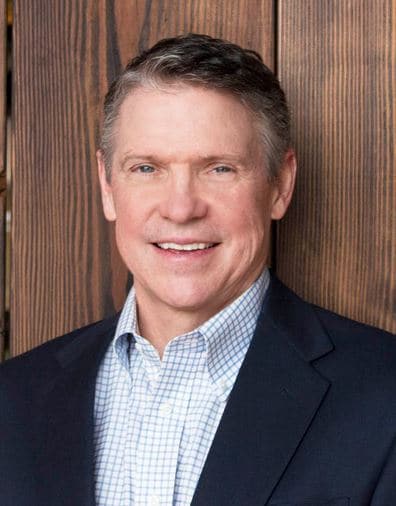Editor’s Note: Business decision-making requires analytics to steer decisions towards profitability. Over the years, the hearing healthcare market has utilized analytics called key performance indicators (KPIs) as their compass when making business decisions. Given the rapid changes occurring in the hearing healthcare arena, we are learning that some KPIs, which were once considered as barometers to financial gain, are not as sensitive as previously believed.
In April 2018, guest blogger Dan Quall, provided readers with insight into the metric of revenue per hour (RPH) and its calculation. In the second of part of this series on KPIs, Mr. Quall poses two additional questions that (1) validates the benefit of RPH, and (2) provides the significance of RPH to a business.
Determining Benefit of RPH
In part 1, we calculated an RPH of $257. Next, we need to determine whether a $257 RPH is healthy for the business? To answer the question, this gross margin was calculated to determine an aggregate RPH for a full year of financial data. Again, utilizing data from the recent Phonak1,2 study, the average practice has a:
|
Median Gross Revenue |
$510,000 |
| Median Gross Revenue from Hearing Aid sales is 71% | $362,100 |
| Aggregate RPH calculation: | |
| Gross Margin from hearing aid sales: 68% of hearing aid sales | $246,228 (i.e., $362,100 * .68) |
| Gross Margin from services and other products: 27.5% | $140,250 (i.e., $510,000 * .275) |
| Total Gross Margin for all sales and service | $386,478 |
| Median Hours reported per clinic | 2080 |
| Median Aggregate Gross Margin per hour | $186 RPH (i.e., $386,478/2080) |
From this dataset, the average office grosses $510,000 annually, based on median reported clinical activity, resulting in providers generating an average of $186 for each hour spent with a patient for all activities provided by the clinic. The difference between the RPH values of $257 (gross margin, from part 1) and $186 (aggregate gross margin, calculated above) is $71 per hour. This difference is likely due to lack of efficiency by appointment type, giving away services for no charge, billing inefficiency, or some combination of these factors.
Importance of RPH in Making Business Decisions
Of more relevance is our second question, “why is this important?” As a hearing healthcare business contemplates inclusion into healthcare/hearing aid contracts or expansion to a multi-disciplinary model, the business manager needs a metric that provides an “apples-to-apples” comparison of revenue by potential services. Using the RPH metric, we can finally compare our bundled hearing aid service models with other non-bundled services whether it is cochlear implants, tinnitus therapy, balance assessment or a fitting fee. Consider the following example.
Should a clinic sign up in network to accept the following fitting/service fee for contracted hearing aid services (e.g., third-party administrator)?
| Testing fee: $75 |
| Fitting fee: $425 per ear |
| Required visits for the fitting fee: Dispensing session, and three follow-up appointments |
| Additional appts: $65 per visit or an annual service contract of $250 |
Based on the service model above and assuming a binaural fitting, a calculation of required hours versus reimbursement for the initial fit and follow-up is estimated to be:
| Clinic Time | Reimbursement |
| Test 1 hour | $75 |
| Fit 1 hour | $850 (bilateral) |
| Hearing Aid Check A .5 hour | $0 |
| Hearing Aid Check B .5 hour | $0 |
| Hearing Aid Check C .5 hour | $0 |
| Total 3.5 hours | $925 |
The RPH for this example equals $264 RPH (i.e., $925/3.5 hours). Compared to an Advance Bundled RPH of $257 or an aggregate RPH of $186, this would appear to be excellent. The difference is, however, in a bundled scenario the patient has “pre-paid” for nine additional hours of service, in the future, at a rate of $257 per hour. The calculation for the contracted services should also be done looking at revenue over five years, as shown below:
| Clinic Time | Reimbursement |
| Test 1 hour | $75 |
| Fit 1 hour | $850 (bilateral) |
| Hearing Aid Check A .5 hour | $0 |
| Hearing Aid Check B .5 hour | $0 |
| Hearing Aid Check C .5 hour | $0 |
| 5 Yrs. 9 hours | $1250 (5 yrs x $250 per year) |
| Total 12 hours | $2175 |
This RPH equals $181 RPH (i.e., , $2175/12 hours). Compared to gross margin RPH of $257 or an aggregate RPH of $186, this would appear to still be reasonable. The contracted model (i.e., third-party administrator) becomes even more attractive with the additional value of the “three R’s” provided by a new patient;
(1) Repeat Business
(2) Related Purchases (e.g., batteries, repairs, ear wax removal, etc.)
(3) Referrals
Summary
When it comes to analysis of third-party contracts, it’s not what you are reimbursed, it’s how much time is required for what you are reimbursed.
References
- Phonak reference: http://www.audiologist.org/about/ada-news-archive/1797-phonak-benchmarking-survey
- Phonak, commissioned Customer Care Measurement and Consulting, LLC (CCMC), a nationwide survey of hearing professionals, 2017 Practice Performance Comparison – US, Audiologist Channel Report.
 Dan Quall is the Director of Managed Care for Fuel Medical Group. Dan is an audiologist who began his career in the hearing industry in the 1970s working for his father’s private practice, and has more than 36 years of industry experience. Dan received his M.S. from Western Oregon University, and owned and operated a number of audiology clinics in the Pacific Northwest.
Dan Quall is the Director of Managed Care for Fuel Medical Group. Dan is an audiologist who began his career in the hearing industry in the 1970s working for his father’s private practice, and has more than 36 years of industry experience. Dan received his M.S. from Western Oregon University, and owned and operated a number of audiology clinics in the Pacific Northwest.







